Ichthyosauria
|
Ichthyosaurs are (mostly) dolphin-like marine reptiles with fins instead of limbs, a dorsal fin (not supported by bone) and a vertical tail fluke. Studies are divided on whether ichthyosaurs are related to the other marine reptiles on this page.
Ophthalmosaurus sp. has exceptionally large eyes and may have dived in deep water where less light penetrates.
Europe, North & South America
Late Jurassic Period, 165-145 Ma
Museum of Ancient Life, Utah
|

|
|
|
Ichthyosaurs, such as this Stenopterygius quadriscissus, had long, slender snouts, often lined with numerous small, sharp teeth. They most likely ate fish and cephalopods.
Posidonia Shale, Germany
Early Jurassic Period, 185 Ma
Denver Museum of Science & Nature
|

|
|
|
Ichthyosaurs gave birth to live young. We know this from fossils such as this Stenopterygius sp. which shows the skeleton of a fetus in the posterior body cavity of a female. Red arrows indicate the fetal vertebral column, blue arrows point to the skull, while green arrows point to other bones such as the fetal humerus and ribs.
Germany
Jurassic Period
Wyoming Dinosaur Center
|
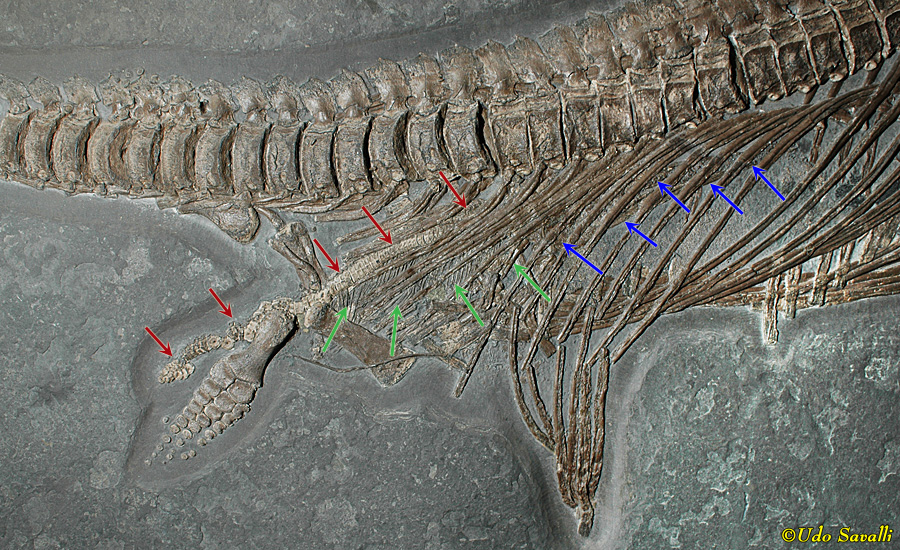
|
|
|
Ichthyosaurus communis is a fairly typical and common ichthyosaur.
Somerset County, England
early Jurassic Period, 199-176 Ma
Fernbank Museum of Natural History, Georgia
|
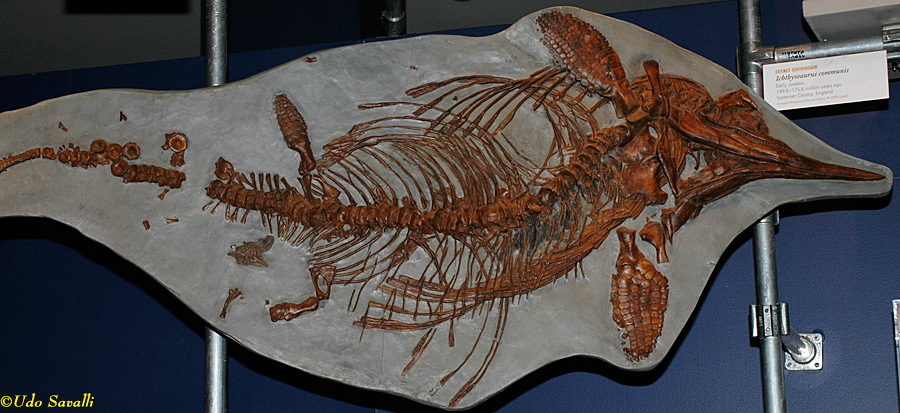
|
|
Testudines — The Turtles
|
The evolutionary position of the turtles is a contentious issue in zoology. Some recent studies suggest they may be related to the sauropterygians (plesiosaurs and relatives), especially the placodonts, but it is also possible that they evolved independently from other aquatic reptiles. The most distinctive feature of turtles is their shell that has both an upper portion (carapace) and lower portion (plastron), derived from ribs and sternum/gastralia, respectively.
The sawtooth turtle, Prionochelys nauta, was a marine turtle
Mooreville Chalk, Alabama
Late Cretaceous Period, 80 Ma
Dinosaur Resource Center, Colorado
|
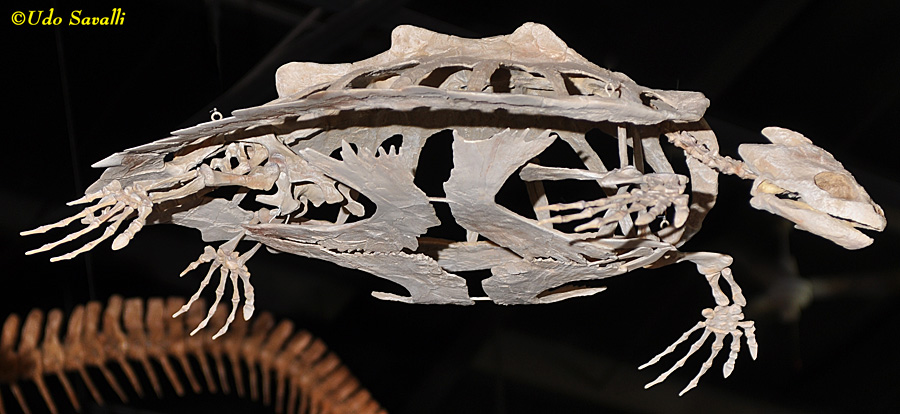
|
|
|
Archelon ischyros was a sea turtle and one of the largest turtles that ever lived.
North America
Late Cretaceous Period, 75-66 Ma
Museum of Ancient Life, Utah
|
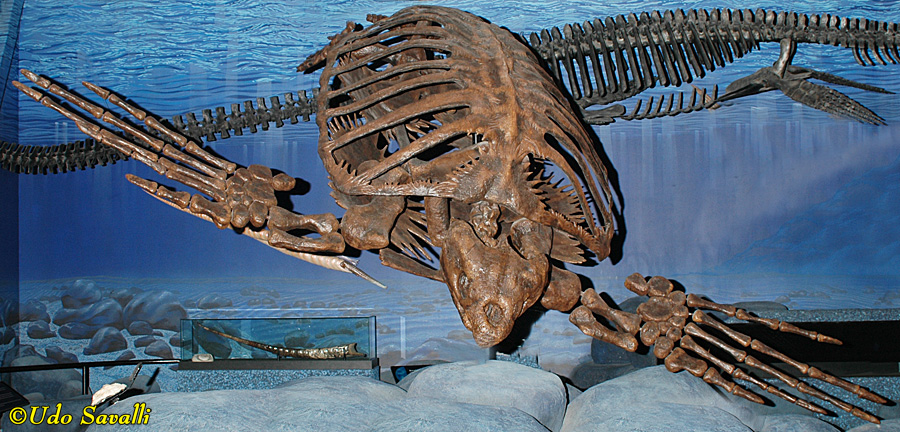
|
|
|
Although the earliest turtles were likely semi-aquatic (as are many modern species), turtles have adapted to a variety of environments including fully aquatic forms (although they do come onto beaches to lay eggs). Aquatic turtles typically have reduced and flattened shells, such as this Toxochelys bauri.
Niobrara Chalk; western North America
Late Cretaceous Period
Museum of Ancient Life, Utah
|
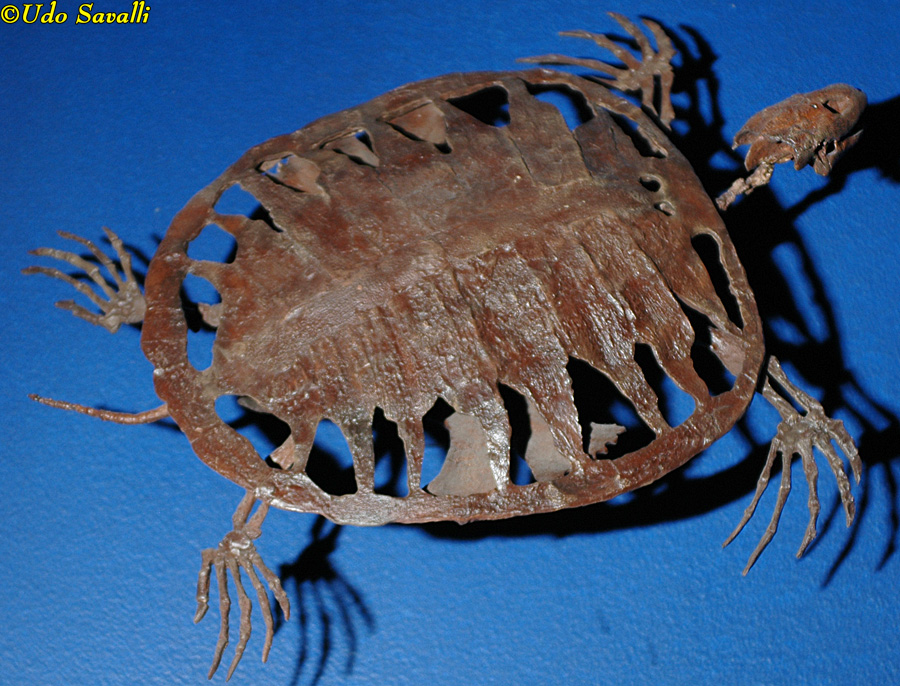
|
|
|
At the other extreme are fully terrestrial tortoises, such as this Hesperotestudo sp. Terrestrial species generally have tall, domed shells.
Ogallala Formation, Yuma Co., CO
Late Miocene Epoch, 7 Ma
Denver Museum of Science & Nature
|
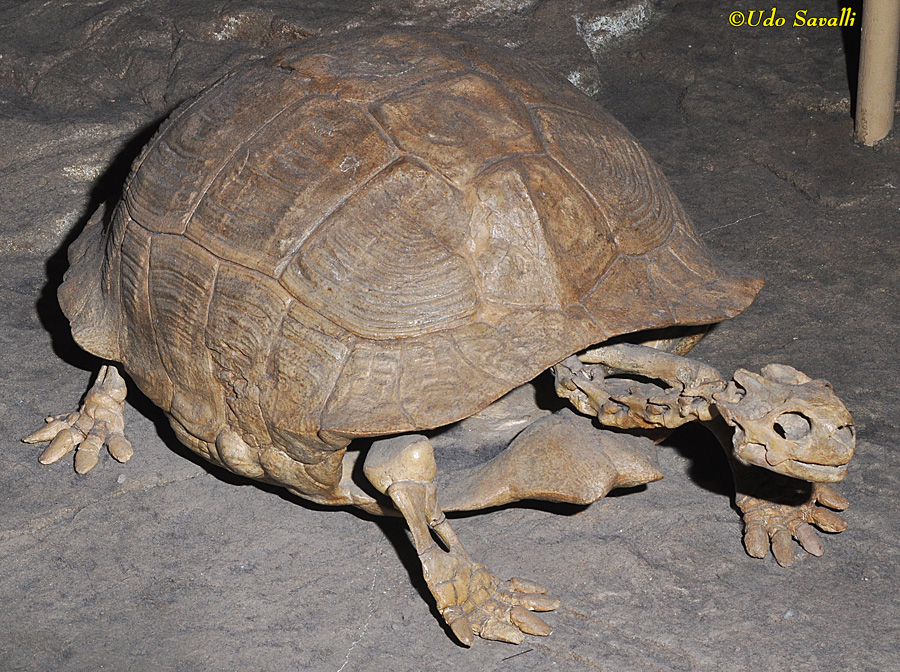
|
|
|
Soft-shelled turtles, such as this Trionyx sp., are so called because they have skin over their shell rather than keratinous scutes. They are highly aquatic fresh-water turtles.
Green River Formation, Wyoming
Eocene Epoch, 50 Ma
Black Hills Institute Museum, South Dakota
|
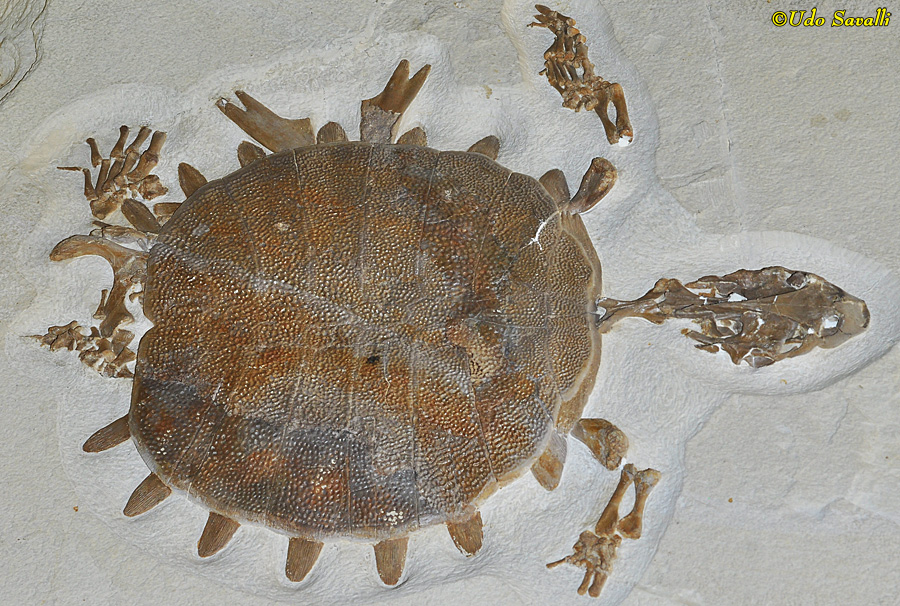
|
|
|
The soft-shelled turtle Hummelichelys guttata, with three crocodile tooth marks in its carapace (upper shell).
Green River Formation, Wyoming
Eocene Epoch, 50 Ma
Fossil Butte National Monument
|
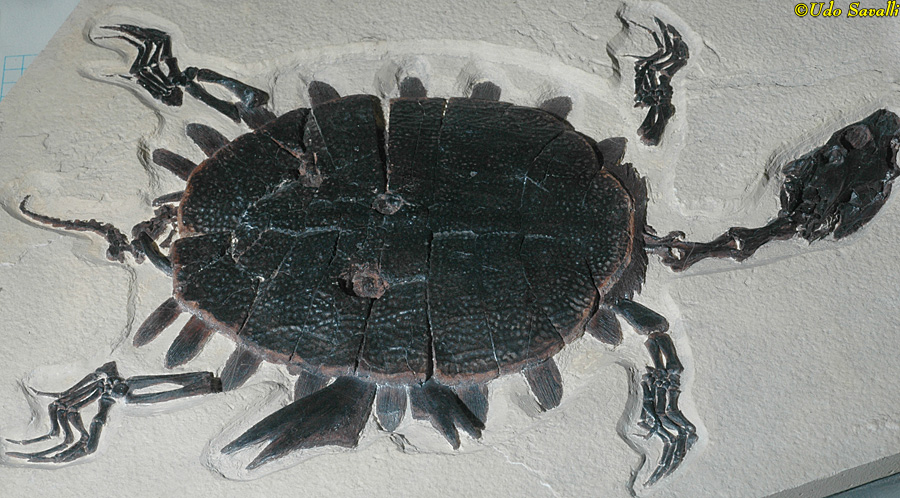
|
|
|
Chisternon undatum.
Green River Formation, Wyoming
Eocene Epoch, 50 Ma
Wyoming Dinosaur Center
|
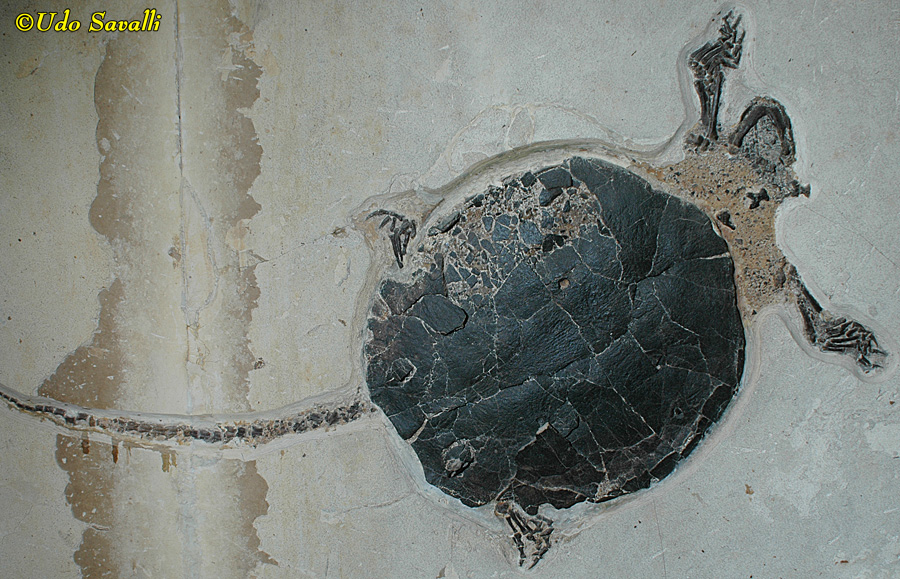
|
|
|
Manchurochelys manchouensis.
Yixian Formation, Liaoning Prov, China
Early Cretaceous Period, 122 Ma
Black Hills Institute Museum, South Dakota
|
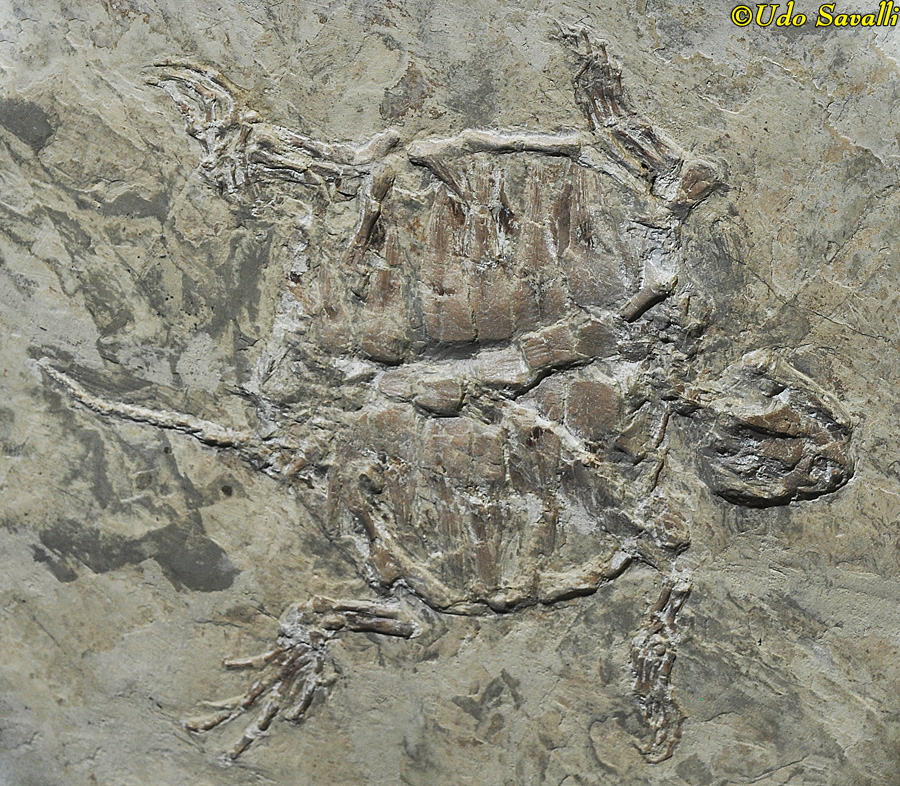
|
|
|
Shell (upside down) of Stygiochelys estesi with crocodile bite marks (upper right).
Hell Creek Formation, western USA
Late Cretaceous Period, 66 Ma
Dinosaur Resource Center, Colorado
|
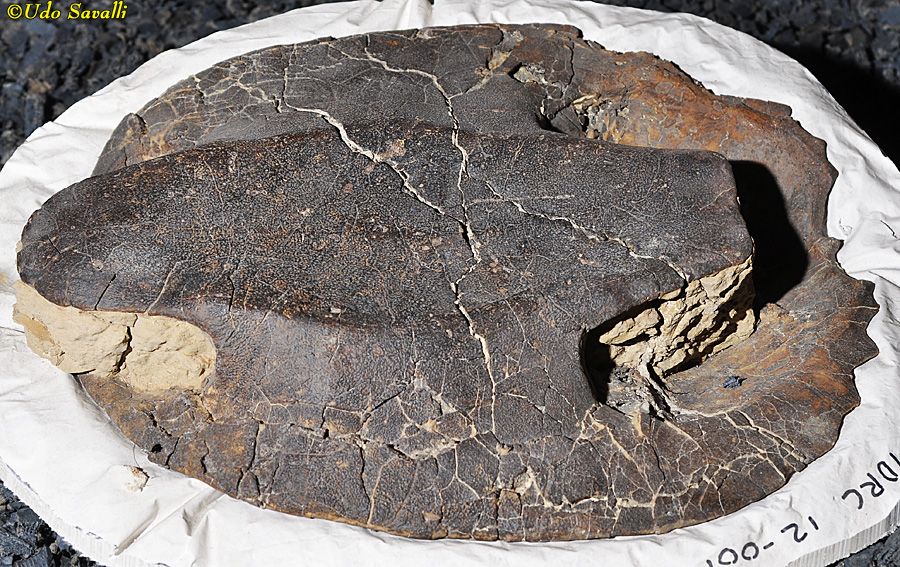
|
|
|
Life model of Desmatochelys.
Taxonomy: "Euryapsida"?; Testudines; Protostegidae
Late Cretaceous Period, 120-83 Ma
Arizona Museum of Natural History
|
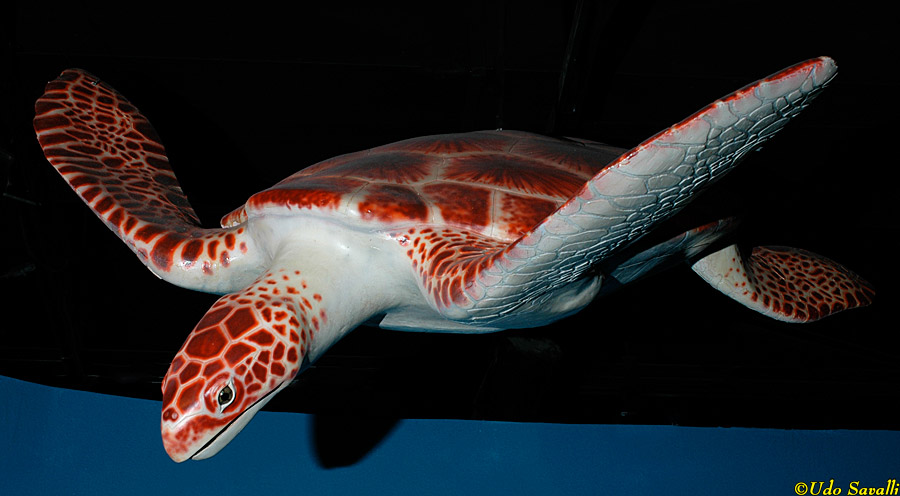
|
|
|
Life model of Kayentachelys aprix, one of the earliest turtles belonging to a modern group.
Taxonomy: "Euryapsida"?; Testudines; Cryptodira
Early Jurassic Period, 196-183 Ma; Kayenta Formation, Arizona
Arizona Museum of Natural History
|
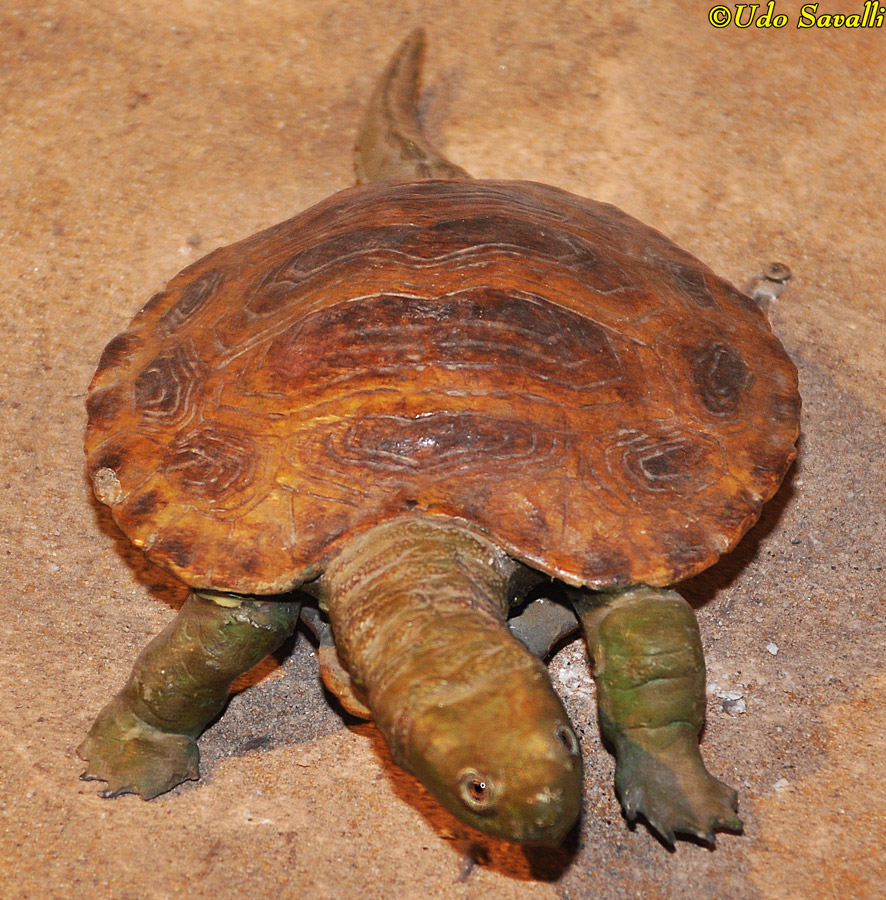
|
|
Placodontia
|
Placodonts are semi-aquatic sauropterygians (the group that includes nothosaurs and plesiosaurs). Many had dermal armor giving them a turtle-like appearance, but their armor evolved independently (it is derived from dermal plates rather than from ribs as in turtles). Most placodonts ate hard-shelled prey (durophagy), but a few were probably filter feeders.
A placodont fossil, possibly Cyamodus sp. The black oval plates at the left are its teeth adapted for crushing hard prey such as molluscs.
China
Triassic Period
Black Hills Institute Museum, South Dakota
|
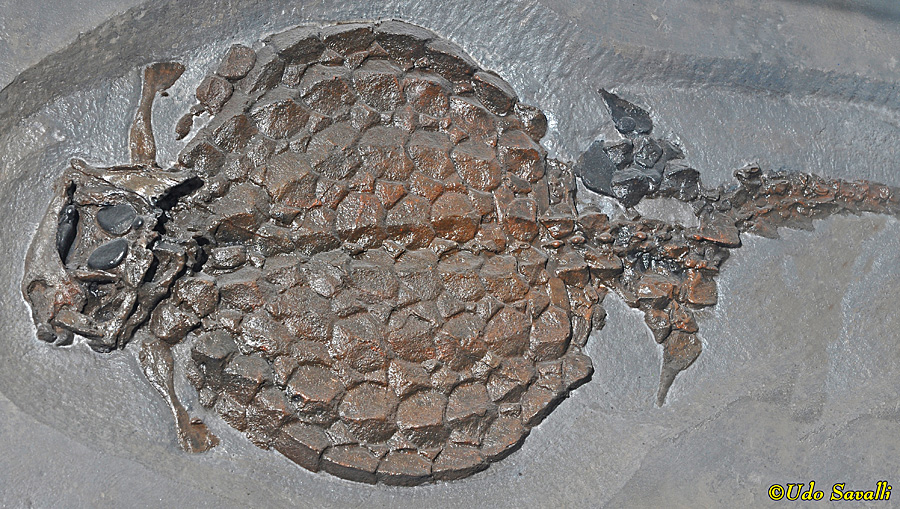
|
|
|
Sinocyamodus sinpuensis fossil cast.
Xiaowa Formation, China
Triassic Period, Tuvalian Stage
ASU teaching collection
|
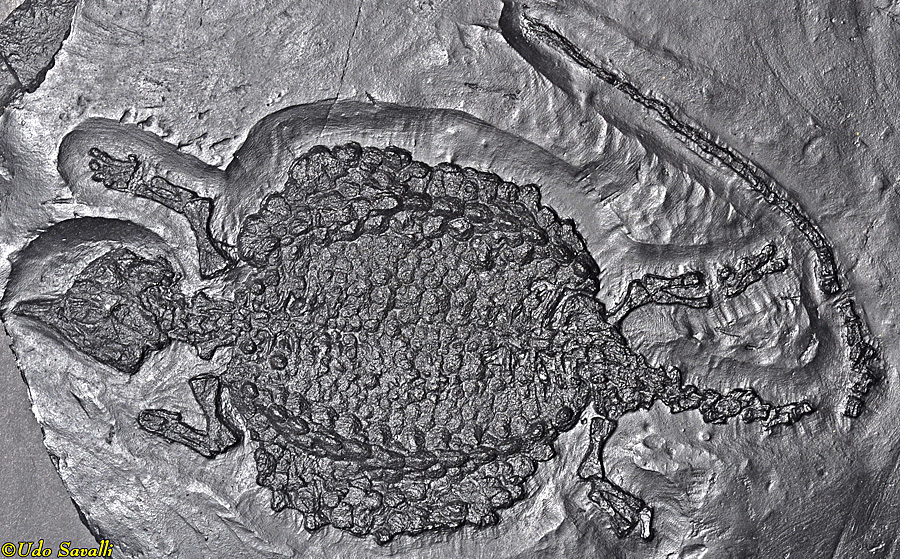
|
|
Nothosauria
|
Nothosaurs are aquatic predators with webbed feet, long necks and small heads. They are generally considered ancestral to the more fully aquatic plesiosaurs (below). The elongated body and long neck is convergent with several other aquatic swimmers such as the mesosaurs and the choristoderans.
The Pachypleurosauridae, such as this Neusticosaurus edwardsi, are sometimes considered a separate clade from the true nothosaurs.
Switzerland
Triassic Period
Black Hills Institute Museum, South Dakota
|

|
|
|
Keichousaurus hui, adult male.
Guanling Formation, Xingyi, Guizhou Province, China
Middle Triassic Period, Spathian Stage
personal collection
|

|
|
|
Life model of Keichousaurus hui.
Taxonomy: "Euryapsida"; Sauropterygia; Nothosauroidea; Pachypleurosauridae
Middle Triassic Period; China
Museum of Ancient Life, Utah
|
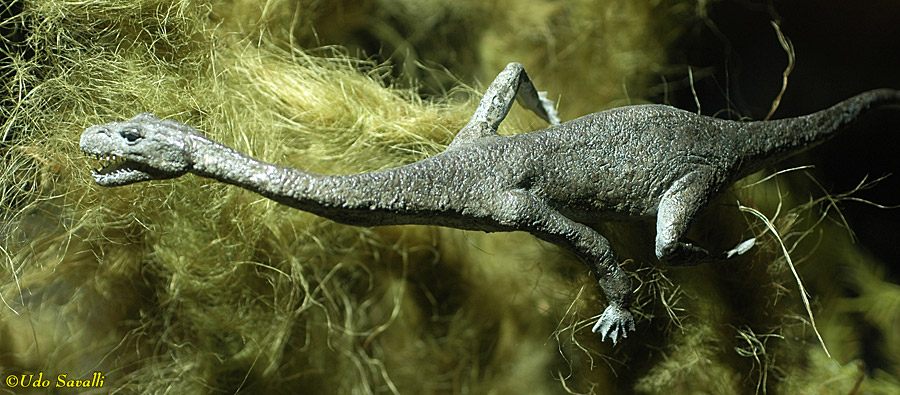
|
|
Plesiosauria
|
Plesiosaurs are a clade of fully aquatic marine reptiles. They swim using 4 large equally-sized flippers. Compared to other marine reptiles (such as mosasaurs and thalattosuchians), the have proportionately short bodies and short tails. This unidentified Polycotylid is a smaller species with an intermediate body plan with respect to head size and neck length.
Morocco
Cretaceous Period
Wyoming Dinosaur Center
|
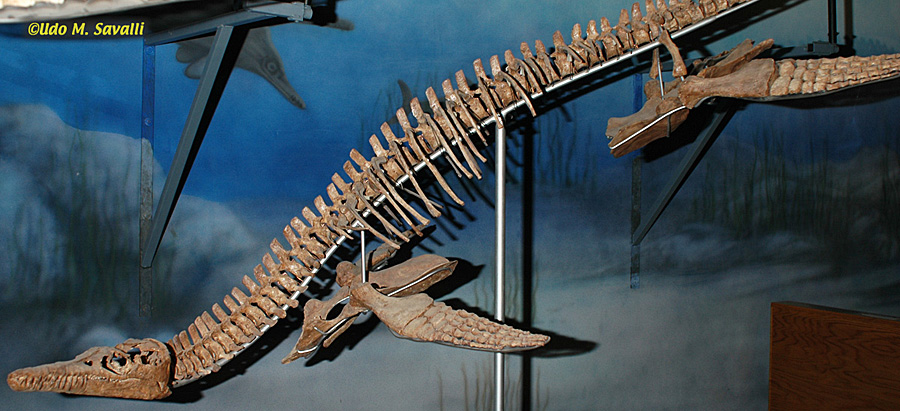
|
|
|
Dolichorhynchus bonneri adult and juvenile.
Redbird Member, Pierre Group, WY & SD
Late Cretaceous Period, 80 Ma
Dinosaur Resource Center, Colorado
|
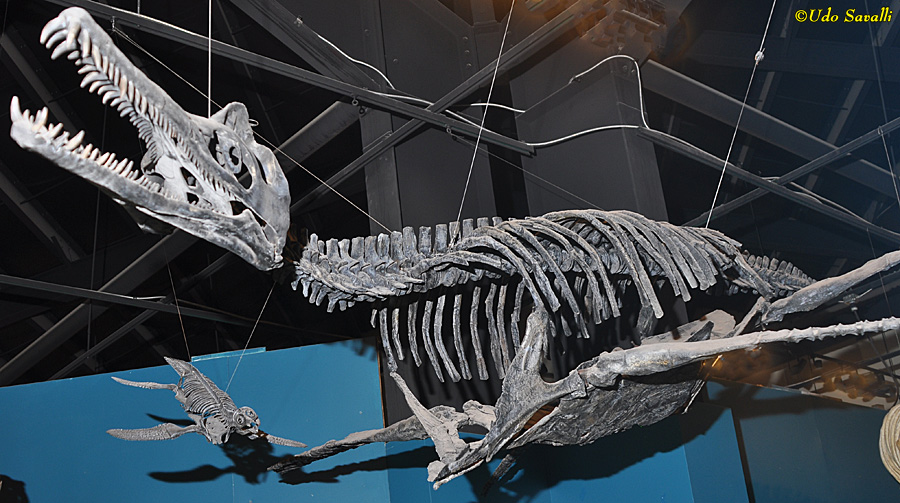
|
|
|
Some plesiosaurs, such as this Zarafasaura oceanis, had very long necks ending in a small skull.
Morocco
Late Cretaceous Period, Maastrichtian Stage, 70-66 Ma
Wyoming Dinosaur Center
|

|
|
|
At the other extreme of plesiosaur body plans are the pliosaurs, which had enormous heads and very short necks.
Wyoming Dinosaur Center
|
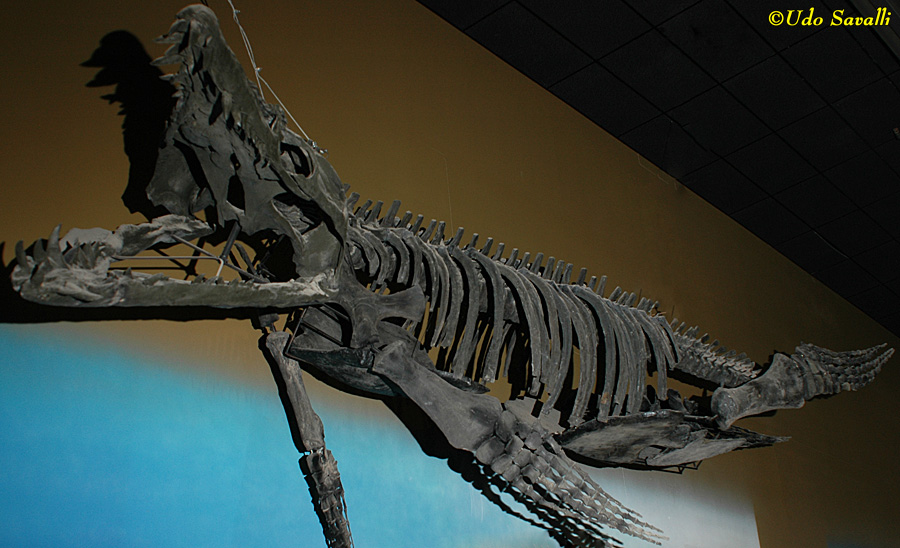
|
|
|
The Manitoba pliosaur is an as of yet unnamed species.
Favel Formation, Manitoba, Canada
Late Cretaceous Period, 90 Ma
Dinosaur Resource Center, Colorado
|
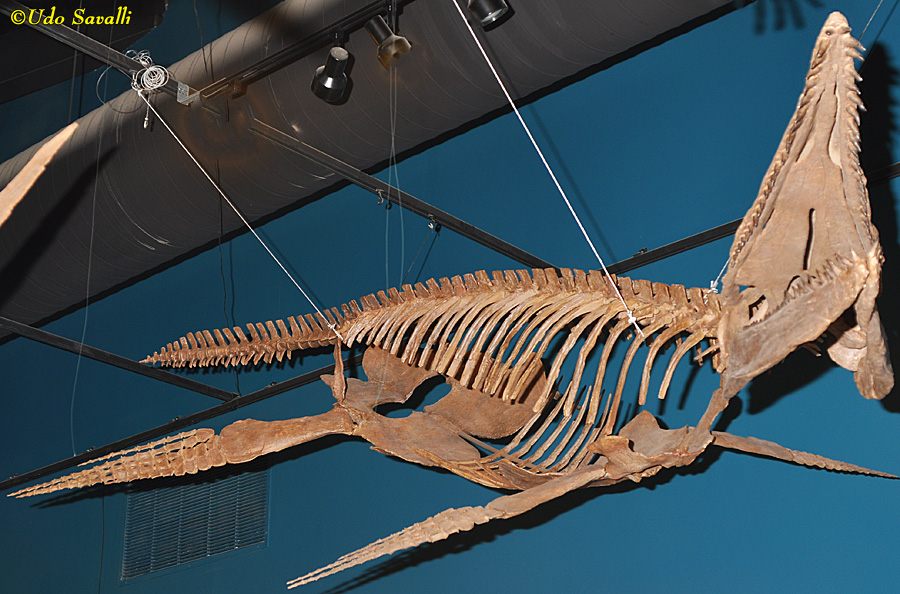
|
|
|
Elasmosaurus platyurus is an exceptionally long-necked plesiosaur.
North America
Late Cretaceous Period, Campanian Stage, 81 Ma
Museum of Ancient Life, Utah
|
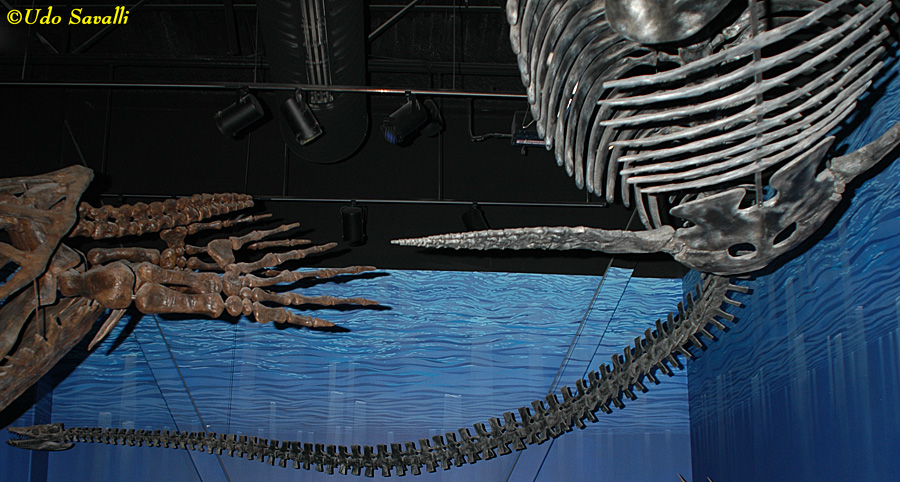
|
|
|
Thalassomedon honingtoni.
Baca Co., Colorado
Late Cretaceous Period, 95 Ma
Denver Museum of Science & Nature
|
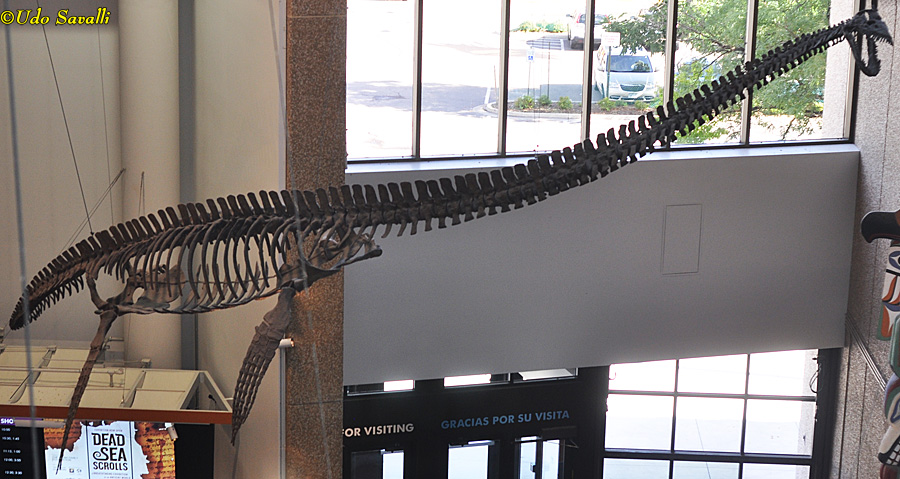
|
|
|
Skull of an unidentified plesiosaur. Plesiosaurs probably ate mostly fish, but some long-necked species may have fed on animals buried in the ocean sediments.
Late Cretaceous Period, 66 Ma
Museum of Ancient Life, Utah
|
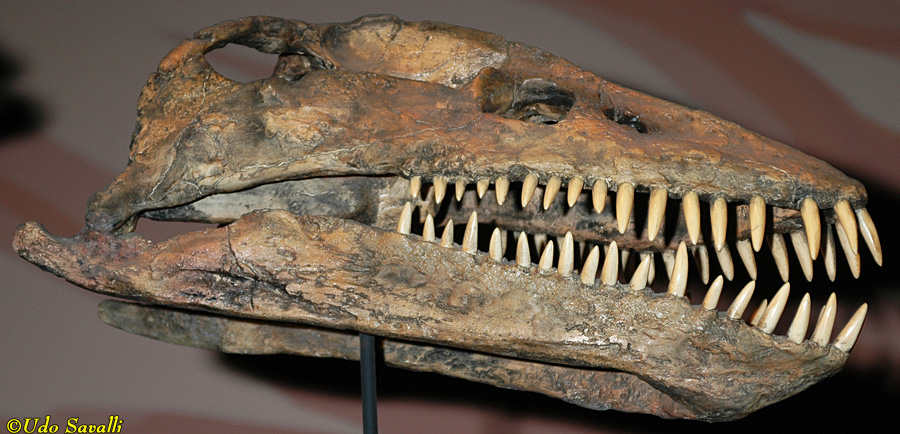
|
|
|
Trinacromerum sp. skull.
Late Cretaceous Period, 100 Ma
Arizona Museum of Natural History
|
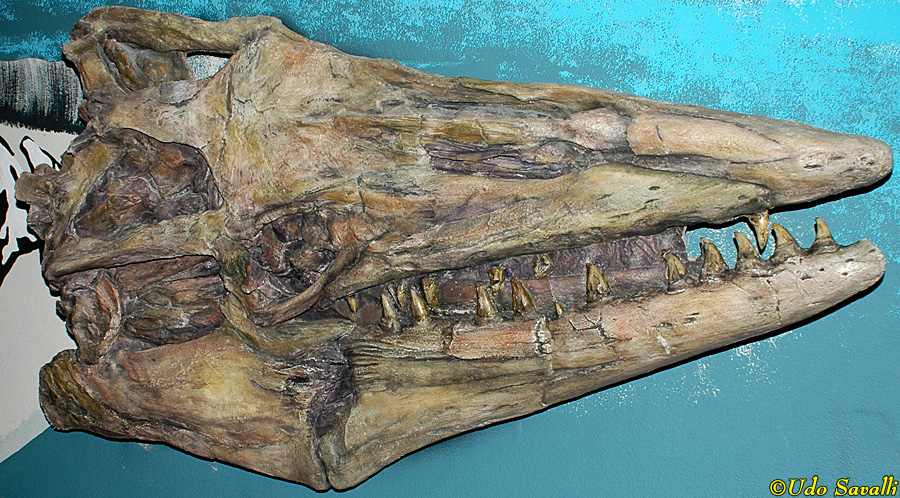
|
|
|
The pliosaur with the largest head is this Megacephalosaurus eulerti but its teeth suggest it ate smaller prey such as fish.
Carlile Shale, Russell Co., Kansas
Late Cretaceous Period, 92 Ma
Dinosaur Resource Center, Colorado
|
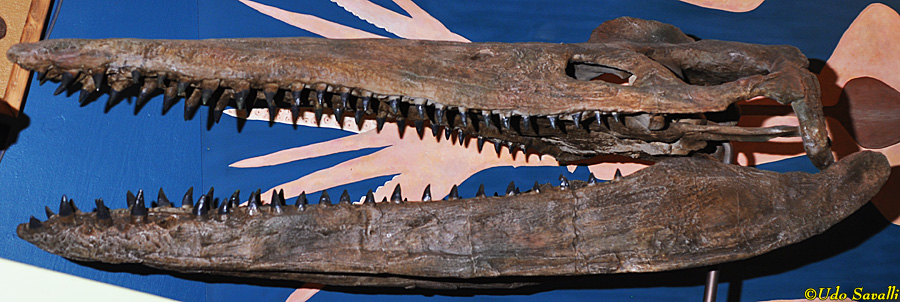
|
|
|
Like ichthyosaurs, plesiosaurs gave birth to live young. We know this from fossils such as this of a female Polycotylus latippinus with a single large embryo (red circle) in her body cavity.
Kansas
Late Cretaceous Period, 78-72 Ma
Los Angeles Museum of Natural History
|
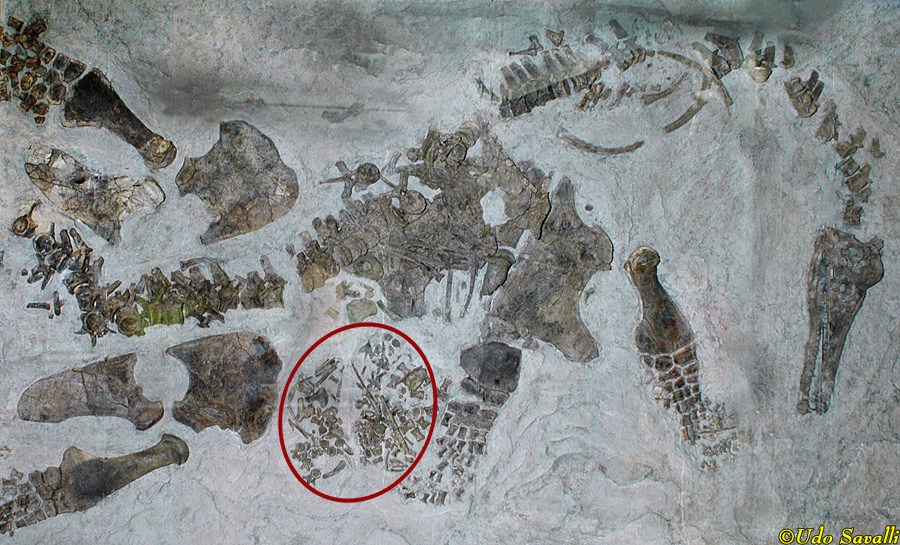
|
|
|
Life model of Trinacromerum sp.
Taxonomy: "Euryapsida"; Sauropterygia; Plesiosauria; Polycotylidae
Late Cretaceous Period, 100 Ma
Arizona Museum of Natural History
|
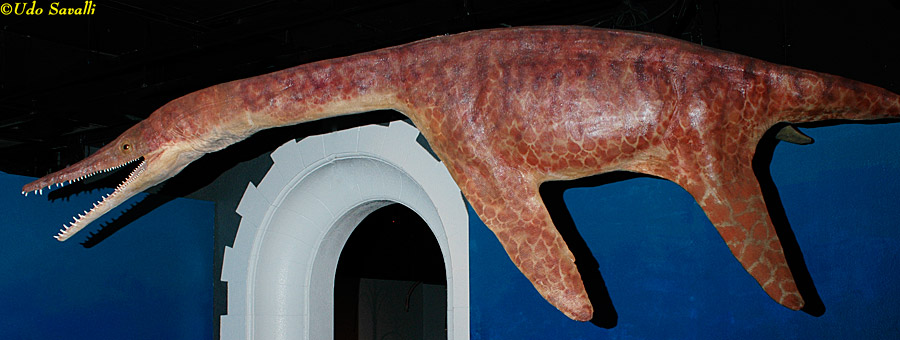
|
|
|
Life model of Edgarosaurus sp.
Taxonomy: "Euryapsida"; Sauropterygia; Plesiosauria; Polycotylidae
Cretaceous Period; Montana
Museum of the Rockies, Montana
|
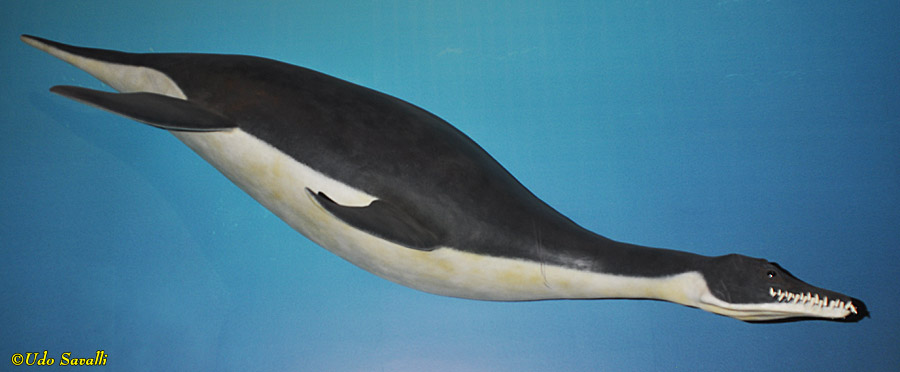
|
|
|
































